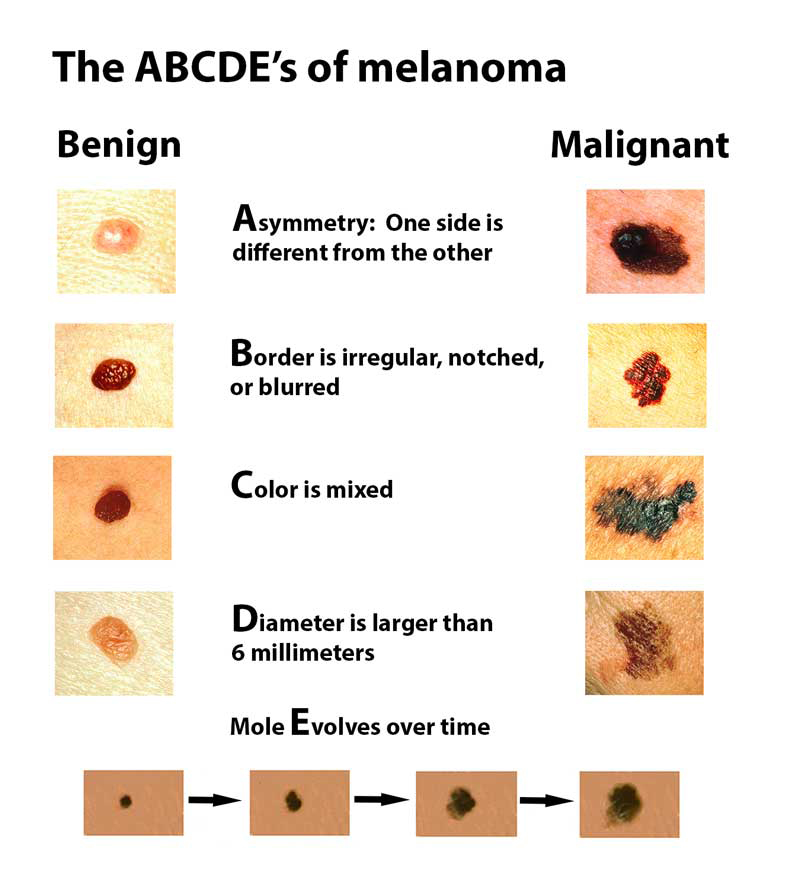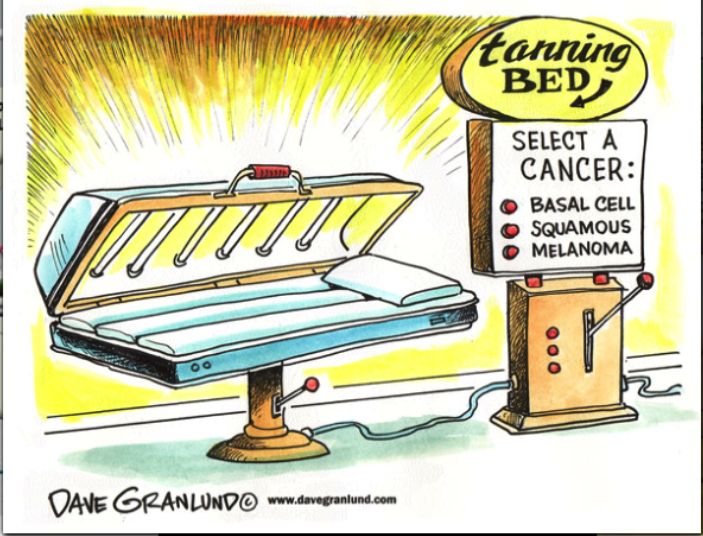Take some proactive steps to protect yourself from skin cancer and melanoma
As a member of the Academy of Nutrition & Dietetics, I’m privileged to have as colleagues some of the most accomplished Registered Dietitian Nutritionists (RDNs).
Our guest columnist this week is Mark A. Mahoney, Ph.D., RDN. A registered dietitian/nutritionist for over 30 years, Mark completed graduate studies in Nutrition & Public Health at Columbia University.

Mark Mahoney, Ph.D., RDN
Mark is a weekly blogger on all things related to health & fitness for Florida’s capital city’s newspaper, The Tallahassee Democrat, and you can reach him at marqos69@hotmail.com.
Mark’s column this week emphasizes lifestyle behaviors that can help prevent one of the most preventable types of cancer — skin cancer. And although Mark’s column focuses on U.S. cancer statistics, Ecuadorians are well aware of the need to take precautions! Whether living on the coast or here in Cuenca, or in Quito or other high altitude Andean villages where the sun is especially strong, today’s column details the dangers of taking the sun’s power for granted, and precautions everyone must take to stay safe.
I think Mark’s missive to see a skin doctor yearly is especially important. The Melanoma Institute of Australia writes Doctors use a number of tools and techniques to examine skin thoroughly, beyond what the naked eye can see. And melanomas that are detected and treated early are cured in 90% of cases. So, in addition to self-checking regularly you should have a professional skin check once a year. It is also important to get a professional skin check by a doctor if anything suspicious appears, in addition to having your annual skin check.
Save Your Skin: Take Some Proactive Steps to Protect Yourself from Skin Cancer and Melanoma
By Mark Mahoney
One in five Americans will develop skin cancer in the course of a lifetime. Reduce risks of skin cancer by protecting your skin from the sun’s harmful ultraviolet (UV) rays.
Article continues below graphic.
As we move into springtime, we will be experiencing some of the sunniest (and driest) days of the year and so it is advisable to think seriously about protecting ourselves from the sun’s potentially damaging rays. Overexposure and lack of adequate protection can produce some serious adverse health effects. Some time ago relatively little was known, or at least, publicized, about the hazards associated with receiving too much sun. I can attest to this lack having seen family members who underwent procedures to remove skin cancer.
So, the primary question to be addressed here are: what is skin cancer, what are its causes and symptoms and what actions can we take to protect ourselves?
Skin Cancer
Skin cancer is a lifestyle disease, affecting young women, older men and everyone in between.
One in five Americans will develop skin cancer in the course of a lifetime; 13 million Americans are living with a history of non-melanoma skin cancer, and nearly 800,000 Americans are living with a history of melanoma, the most dangerous form of skin cancer.
Causes and Symptoms
UV radiation is part of the electromagnetic (light) spectrum that reaches the earth from the sun. It has wavelengths shorter than visible light, making it invisible to the naked eye. The two types of most concern are UVA and UVB, as both penetrate the atmosphere and play an important role in conditions such as premature skin aging, eye damage (including cataracts), and skin cancers. They also suppress the immune system, reducing your ability to fight off these and other maladies.
But there is good news: because skin cancer is chiefly a lifestyle disease; it is also highly preventable. According to Perry Robins, MD, president of The Skin Cancer Foundation, “About 90 percent of non-melanoma skin cancers and 65 percent of melanoma cases are associated with exposure to ultraviolet (UV) radiation from the sun.” He goes on to note, “Everyone, regardless of skin color, should make staying safe in the sun a priority and incorporate sun protection measures into their daily life.”

Actions to Reduce Skin Cancer Risks
SEEK THE SHADE – especially between 10 a.m. and 4 p.m., when the sun is strongest. An extra rule of thumb is the “shadow rule.” If your shadow is shorter than you are, the sun’s harmful UV radiation is stronger; if your shadow is longer, UV radiation is less intense.
DO NOT BURN. A person’s risk for melanoma doubles if he or she has had five or more sunburns at any point in life.
AVOID TANNING AND UV TANNING BOOTHS. UV radiation from tanning machines is known to cause cancer in humans, and the more time a person has spent tanning indoors, the higher the risk. Those who make just four visits to a tanning salon per year can increase their risk for melanoma by 11 percent, and their risk for the two most common forms of skin cancer, basal cell carcinoma and squamous cell carcinoma, by 15 percent.
COVER UP WITH CLOTHING, INCLUDING A BROAD BRIMMED HAT.
USE A BROAD SPECTRUM (UVA/UVB) SUNSCREEN WITH AN SPF OF 15 OR HIGHER EVERY DAY. For extended outdoor activity, use a water-resistant, broad spectrum (UVA/UVB) sunscreen with an SPF of 30 or higher.
APPLY 1 OUNCE (2 TABLESPOONS) OF SUNSCREEN TO YOUR ENTIRE BODY 30 MINUTES BEFORE GOING OUTSIDE. Reapply every two hours or immediately after swimming.
KEEP NEWBORNS OUT OF THE SUN – Sunscreens should be used on babies over the age of six months.
EXAMINE YOUR SKIN – Check yourself from head to toe every month
SEE A PHYSICIAN EVERY YEAR – Undergo a professional skin exam

Consult the following website for some rather startling skin cancer facts and statistics: https://www.skincancer.org/skin-cancer-information/skin-cancer-facts
A comprehensive resource from the National Cancer Institute which includes treatment, research, causes and prevention and screening on skin cancer (including melanoma) can be found at: https://www.skincancer.org/skin-cancer-information/skin-cancer-facts
Take the time to protect yourself and your family for a better quality of life by focusing on a healthy lifestyle including caring for your skin.





















